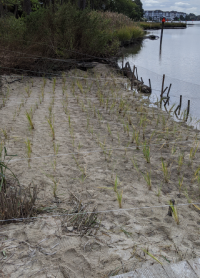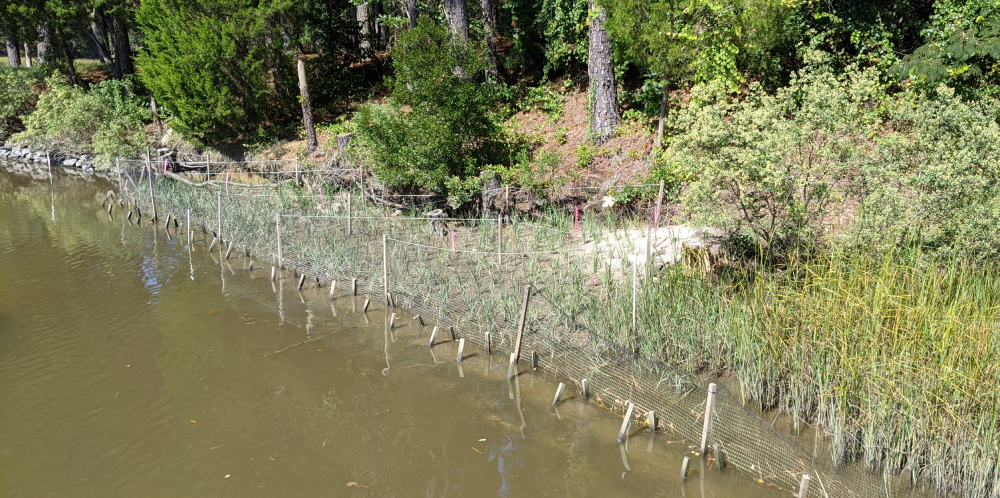Welcome to a very special edition of “From the Marsh!”
Today, the James River Association is excited to announce the launch of a brand-new cost-share program for living shorelines within the tidal reaches of the watershed.
What is a living shoreline, exactly? While no two are alike, many resemble constructed marshes that are designed to slow erosion with the added benefit of reducing pollution while providing habitat for native wildlife. Added sand is planted with marsh grasses in order to protect banks. Depending on the “energy” of the wind and waves affecting the shoreline, different protective structures may be necessary to ensure that the sand stays in place. Some of these include biodegradable coconut-fiber coir logs, oyster castles (that help create reefs!), and stone.


How do they work? During storm events, native marsh grasses and their robust root systems will hold the sand in place and can even attenuate wave energy during flooding. The new marsh can be resilient and “repair” itself if damaged, something that bulkheads and revetments can never do! Primarily, living shorelines are designed to prevent or slow erosion, but marsh grasses are also excellent at removing excess nutrients from the water, helping to create a healthy river. They also create nursery habitat for the juvenile stages of many species that are economically important, such as blue crabs and striped bass.
Do you own tidal, waterfront property located in the Lower James Watershed? Are you experiencing erosion? You may qualify for JRA’s cost-share program! Please be sure to visit jamesrivershorelines.org for more information and see if a living shoreline is right for you.

